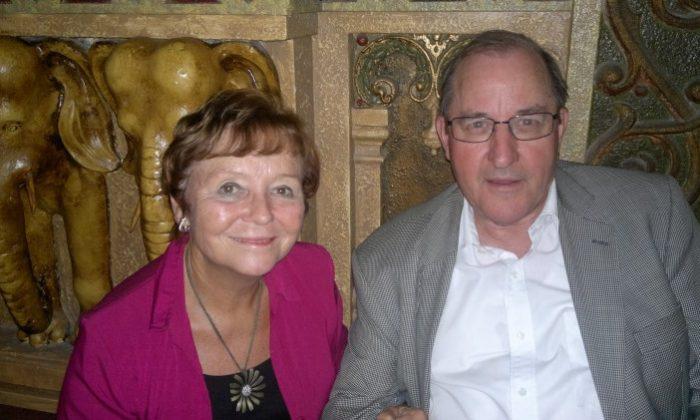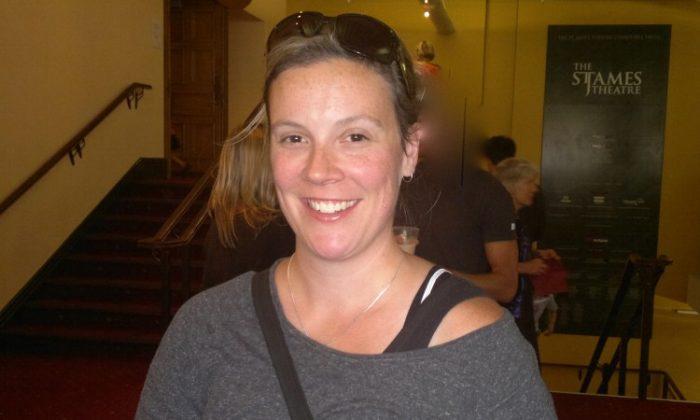“We will welcome Matariki when we see Matariki come over the horizon,” said Cathy Dewes, principal of landmark total immersion language school, Kura Kaupapa Maori o Ruamata in Rotorua.
Ms Dewes, a champion in the revitalisation of Maori culture and language, accompanied children from Ruamata School up Mount Ngongotaha last Friday to greet Matariki at dawn.
Matariki, also known as the traditional Maori New Year, is the name given by Maori, native to New Zealand, to the Pleiades, a small cluster of stars in the Taurus constellation, also known as the Seven Sisters in Greek legend.
It is a special moment in the traditional Maori calendar when families gathered together to give thanks to the land, sea and sky, in celebration of the abundance of food gathered over the harvesting season.
The practice of observing rituals around Matariki dwindled in the early 1900s, but has again regained prominence as part of the revival of Maori culture.
But, the welcoming ceremony (powhiri) is always performed at traditional Maori gatherings preserved for sacred occasions. However, in this instance the ceremony is performed wherever Matariki is observed.
“Everyone who has lost someone during the past year is invited to say words of farewell…” Ms Dewes said. “We are following the rituals of our ancestors – letting go of the sorrows from the past twelve months and moving on to the future.”
And then there would be hangi, a ceremonial banquet to treat guest with the finest foods--the fruits of Matariki.
“It was believed that the aroma from the hangi served to awaken the Matariki cluster,” says Ms Dewes.
During the powhiri, visitors are invited to bring their ancestors and those recently passed so they can be mourned.
“I think releasing the dead from the previous year is very important and...being prepared to move on to whatever tasks await them in the New Year,” she added. She compared it to the January 1, New Year’s resolution.
Ms Dewes, a champion in the revitalisation of Maori culture and language, accompanied children from Ruamata School up Mount Ngongotaha last Friday to greet Matariki at dawn.
Matariki, also known as the traditional Maori New Year, is the name given by Maori, native to New Zealand, to the Pleiades, a small cluster of stars in the Taurus constellation, also known as the Seven Sisters in Greek legend.
It is a special moment in the traditional Maori calendar when families gathered together to give thanks to the land, sea and sky, in celebration of the abundance of food gathered over the harvesting season.
The practice of observing rituals around Matariki dwindled in the early 1900s, but has again regained prominence as part of the revival of Maori culture.
But, the welcoming ceremony (powhiri) is always performed at traditional Maori gatherings preserved for sacred occasions. However, in this instance the ceremony is performed wherever Matariki is observed.
“Everyone who has lost someone during the past year is invited to say words of farewell…” Ms Dewes said. “We are following the rituals of our ancestors – letting go of the sorrows from the past twelve months and moving on to the future.”
And then there would be hangi, a ceremonial banquet to treat guest with the finest foods--the fruits of Matariki.
“It was believed that the aroma from the hangi served to awaken the Matariki cluster,” says Ms Dewes.
During the powhiri, visitors are invited to bring their ancestors and those recently passed so they can be mourned.
“I think releasing the dead from the previous year is very important and...being prepared to move on to whatever tasks await them in the New Year,” she added. She compared it to the January 1, New Year’s resolution.
Ancient Maori would regard the shortest day of the year, the Winter Solstice, as the first day of the Maori New Year, a time to rest and to pass on their teachings to the young.
The Matariki cluster is acknowledged by nearly all cultures including Aboriginal, Japanese, American Indian, Chinese and Greeks and Polynesian for centuries.
In Polynesia – Samoans know Matariki as matali‘i – Tongans as mataliki, the people of Hawaii as makali’i and Tahitians called it matari'i.
The tiny constellation, which has two meanings in Maori - Mata Riki (tiny eyes) or Mata Ariki (Eyes of God) – can be seen in the open sky with the naked eye.
However, it wasn’t always so in the Waikato.
“My late father ...asked, how could one celebrate Matariki here in Waikato when it’s fogged down for months and weeks on end,” said Wiremu Puke, Maori cultural advisor and ethnographic researcher.
The conversion of peat swamps and wetlands to farming led to peat fires which together with the fog meant that it wasn’t until around 1975 that there was sufficient daylight to observe Matariki.
Not all Maori iwi observe Matariki, says Mr Puke from the Ngati Wairere hapu of the Tainui iwi. Other iwi observe rituals around different sacred stars.
Matariki has also been incorporated into the coat of arms of Royal House of Potatau, the house of the Maori king.
It was particularly important for Waikato iwi where it heralded the coming of fine weather when the the Kowhai flowered, a sign that the sweet ‘kumara’ potato, could soon be planted.
Mr Puke has watched the revival of Matariki with a little regret. He says that while it mirrors the northern hemisphere’s Summer Solstice ceremonies that have been combined with some new age elements, many traditional Maori customs have been left out or lost.
“I sometimes struggle with it because in another 50 years it becomes the cultural norm when it really wasn’t,” he says.
Ceremonial rituals around fishing, harvesting and planting which are the most important have been retained.
“What I would like to see if there was ever a change to the New Zealand flag is to have the Matariki on the flag rather than the Southern Cross, because it looks too much like the Australian (flag).”
It would honour the navigational expertise of the ancient Polynesian navigators who arrived in Aotearoa (New Zealand) from central Polynesia after circumnavigating the Pacific over 1000 years ago, says Mr Puke.
“One of the most significant stars that also appear at the time of Matariki – Te Punga o Tainui,” he says, is the anchor stone of the Tainui canoe (waka).
Oral history tells of the “Great Migration,” a fleet of seven main waka from Ra'iatea Island to Aotearoa some 600 years ago, the Tainui included.
This year, the festivities and celebrations for Matariki take place from June 4 through to July 4.
The Matariki cluster is acknowledged by nearly all cultures including Aboriginal, Japanese, American Indian, Chinese and Greeks and Polynesian for centuries.
In Polynesia – Samoans know Matariki as matali‘i – Tongans as mataliki, the people of Hawaii as makali’i and Tahitians called it matari'i.
The tiny constellation, which has two meanings in Maori - Mata Riki (tiny eyes) or Mata Ariki (Eyes of God) – can be seen in the open sky with the naked eye.
However, it wasn’t always so in the Waikato.
“My late father ...asked, how could one celebrate Matariki here in Waikato when it’s fogged down for months and weeks on end,” said Wiremu Puke, Maori cultural advisor and ethnographic researcher.
The conversion of peat swamps and wetlands to farming led to peat fires which together with the fog meant that it wasn’t until around 1975 that there was sufficient daylight to observe Matariki.
Not all Maori iwi observe Matariki, says Mr Puke from the Ngati Wairere hapu of the Tainui iwi. Other iwi observe rituals around different sacred stars.
Matariki has also been incorporated into the coat of arms of Royal House of Potatau, the house of the Maori king.
It was particularly important for Waikato iwi where it heralded the coming of fine weather when the the Kowhai flowered, a sign that the sweet ‘kumara’ potato, could soon be planted.
Mr Puke has watched the revival of Matariki with a little regret. He says that while it mirrors the northern hemisphere’s Summer Solstice ceremonies that have been combined with some new age elements, many traditional Maori customs have been left out or lost.
“I sometimes struggle with it because in another 50 years it becomes the cultural norm when it really wasn’t,” he says.
Ceremonial rituals around fishing, harvesting and planting which are the most important have been retained.
“What I would like to see if there was ever a change to the New Zealand flag is to have the Matariki on the flag rather than the Southern Cross, because it looks too much like the Australian (flag).”
It would honour the navigational expertise of the ancient Polynesian navigators who arrived in Aotearoa (New Zealand) from central Polynesia after circumnavigating the Pacific over 1000 years ago, says Mr Puke.
“One of the most significant stars that also appear at the time of Matariki – Te Punga o Tainui,” he says, is the anchor stone of the Tainui canoe (waka).
Oral history tells of the “Great Migration,” a fleet of seven main waka from Ra'iatea Island to Aotearoa some 600 years ago, the Tainui included.
This year, the festivities and celebrations for Matariki take place from June 4 through to July 4.



Friends Read Free